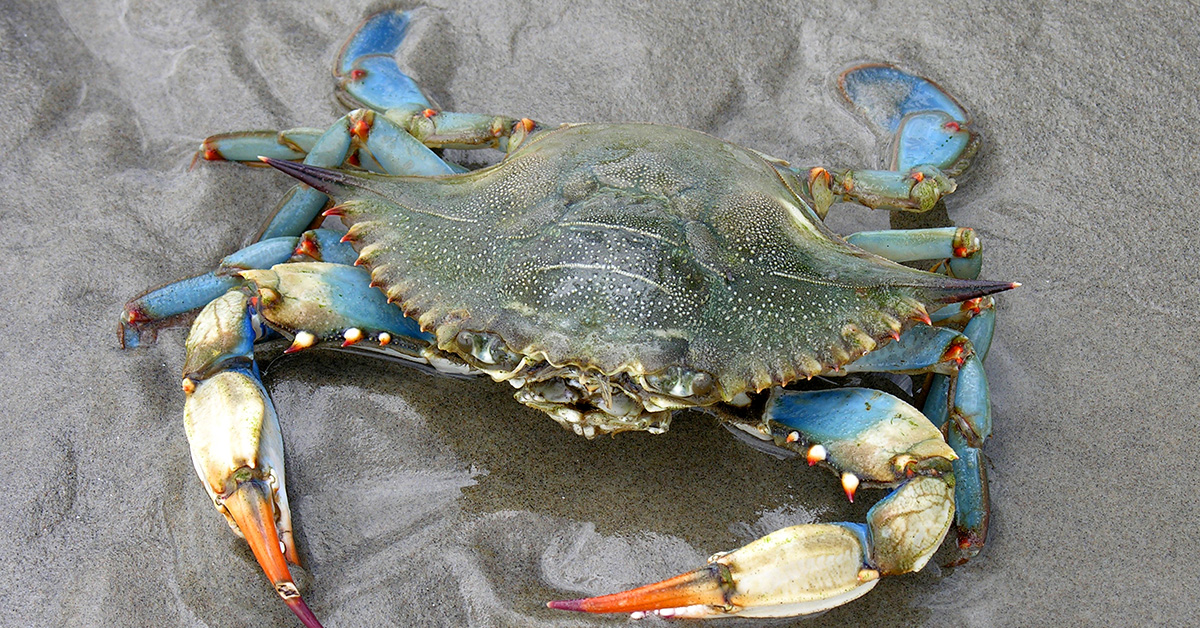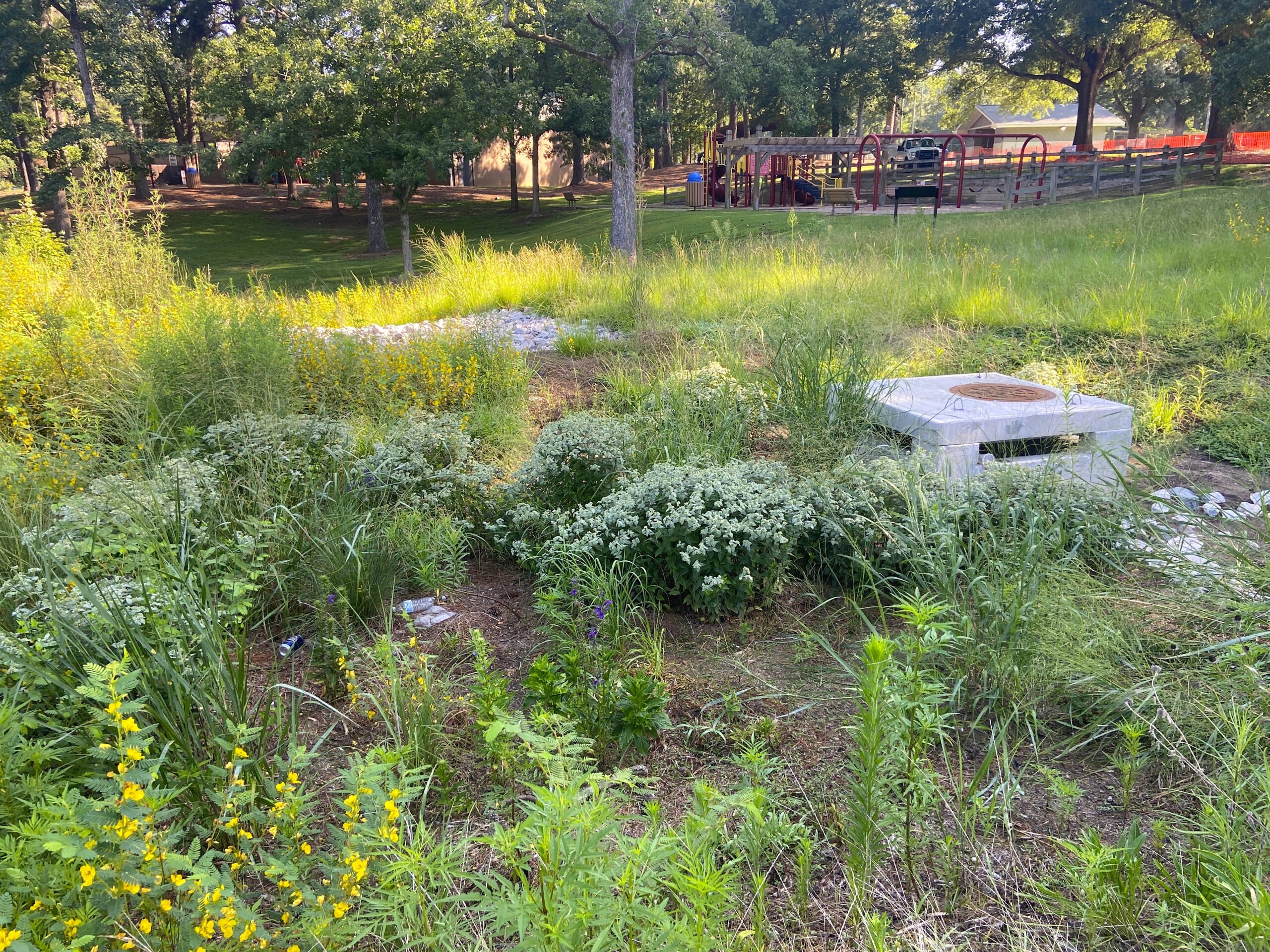Fred “Fritz” Bell and deckhands Mark Hastey and Bob Miles set out from Midway Marina in Coinjock at sunrise. Bell’s boat, “Busted,” is stocked with bait for a day of pulling crab pots.
Heading down the channel into North River, which forms the border between Currituck and Camden counties, the three men start their rhythmic routine: hooking each red-and-green-striped buoy; pulling up the attached pot; shaking the blue crabs into the culling sink; separating them into baskets by size and sex; baiting the pot with fresh menhaden; and throwing the pot back into the water with the buoy trailing behind.
“I like the freedom out here,” says Hastey, Bell’s brother-in-law and crabbing partner since 1990. “No stop signs. No speed limits.”
Every basket they fill with an upside-down lid, then set aside for tagging and release back into Currituck Sound as part of a state-funded research project.
“You can tell the females because they have red nail polish,” Miles says with a chuckle, pointing out the bright red-tipped claws. He also indicates an immature female and the narrow inverted “V” on her belly instead of the Capitol-building shape characteristic of a mature female.
“She could shed,” Miles says, throwing her back in the water.
As the boat moves up North River towards fresher water, fewer and fewer females turn up in the pots.
Mysterious Ways
As North Carolina’s most profitable fishery, blue crabs receive a lot of attention from fishermen, researchers and resource managers alike. Yet many details about crab habits remain elusive.
Most crabbers know to expect a large influx of female blue crabs into fresher water in the late summer to fall, but yearly variations in timing, frequency, and quantity of these migrations make North Carolina blue crab whereabouts anything but predictable.
“Sometimes crabbers will know where the crabs are and be sitting right on top of them, but the crabs won’t pot” says Marc Turano, North Carolina Sea Grant blue crab specialist and coordinator of the N.C. Blue Crab and Shellfish Research Program.
The Spawning Stock Management section of the current N.C. Blue Crab Fishery Management Plan indicates the need for tagging studies to identify how many crabs are caught during their different life stages, and how females move in relation to where they spawn.
Bell is one of four commercial crabbers participating in a mature female blue crab tag-and-release study led by Kristina Bridges of Endurance Seafood Company. The blue crab research program is funded by the N.C. General Assembly and administered by Sea Grant. Projects often pair crabbers with scientists or mangers who analyze data.
This project investigates crabs in Currituck and Albemarle sounds, where data on blue crab migration and catch is especially limited.
Do all females travel the same direction? Do they travel in a straight line? How much does salinity affect their movement? How fast do they move? No one knows.
This year, Bridges has noticed a larger catch of hard blue crabs, but only half the normal catch of peeler crabs — those about to shed their shells — compared to years past.
H.L. Bond, another crabber on the project, says lately he hasn’t caught as many females as usual near the mouth of the Perquimans River.
Researchers don’t know what causes these variations, but some say weather and changes in salinity may be the culprits.
Mike Mixon, another project participant and commercial crabber for the past 22 years, says the water has been saltier than normal this year.
Others theorize that crabs move based on tidal cycles, Turano notes.
Thus, with so many mysteries still to solve, this kind of study may provide important clues.
As one of three blue crab tagging projects funded in 2008, the Northeast study involves releasing tagged female crabs at selected sites in Albemarle and Currituck sounds and collecting data on location of recapture, number of days at large, and distance traveled for each recaptured crab.
“It’s interesting just seeing where they end up,” Bell says.
Tag and Release
Each of the crabbers set pots in designated areas once a month from late May through November. Each crabber tagged 150 mature females per month and released them in the following areas:
- Kristina Bridges — mouth of North River (Albemarle Sound)
- Fred Bell — near Coinjock (Currituck Sound)
- Mike Mixon — near Durant’s Island (Albemarle Sound)
- H.L. Bond — near Harvey Point (Albemarle Sound)
They attached plastic tags with thin wire wrapped around the points of each crab’s back. The crabbers also measured water depth and temperature, and collected water samples to measure the salinity at each release point.
Advertisements and contact information on the tags encouraged finders to report any crab with a rectangular yellow tag attached to its shell. In exchange for contacting Bridges with the approximate location and depth of water where the crab was caught, finders could receive $5 or a hat, along with an entry into 10 drawings for $100. Bridges says a little boy who found a tag called and said he wanted the hat, but needed the $5 to save up for a dirt bike.
“I felt bad so I gave him both,” Bridges says, smiling.
Bridges also sent a letter to finders describing where the crab they caught was originally released and how far it had traveled to arrive in the crabber’s pot.
It was not just crabbers who found the tags, though. Sometimes the crabs made it further up the food chain before turning up.
“One man bought a crab in a Korean market and got a tag,” Bridges says. Two others were found at seafood markets in Virginia. One was found at a picking house, and another in a box of crabs purchased by Endurance Seafood Co., the family business started by Bridges’ father, Murray.
Kristina Bridges originally expected about 30 percent of the tags would be reported. As of late September, the most reported from any one of the four areas was 19 percent near Durant’s Island.
Like Turano says, sometimes the crabs just elude crabbers’ pots.
Other times, Bridges and Turano say that commercial crabbers may catch tagged crabs, but hesitate to report them, afraid that stricter regulations could result.
“I just ask them: Would you rather see the fishery managed based on data you helped collect, or on ‘best available’ data?” Turano responds.
Bond, who has participated in past research projects on colored pots and cull rings, recognizes the value of research for the industry. He tries to convince fellow crabbers that tagging studies like this one can help discover which way crabs are moving and how fast.
“I think it will help us,” Bond explains. “When you go to bulk crabbing, you’ll know where to find females.”
Turano often is asked the tally for a normal year’s catch. He estimates between 25 million and 35 million pounds. Last year’s total blue crab catch was about 22 million pounds, which falls below that range. A combination of high fuel and bait prices, fewer picking houses, the shift to the basket market and fewer crabs, may have reduced catches in 2007, he suggests.
Project participants are amazed at how far and how fast some of the crabs are moving.
The longest reported distance a crab traveled was 44 miles over a 16-day period. The longest reported time of any crab “at large” was 68 days.
“I don’t know if their legs are moving them,” Bridges says.
The direction the females are moving has also surprised the team.
“What has been very interesting is we always thought they went north in May and June and came south in the fall. But so far the data we’ve collected on migration patterns has surprised us,” Mixon says. “We’re excited to see what the next few months will bring.”
“Everything is headed down the sound or headed south to the ocean,” Bridges explains.
When finders call Bridges to report tags, she encourages them to re-release the crabs so that they can continue to track them.
One man caught a crab, re-released it and caught it again a few pots away within 24 hours. One crab was caught four times, each time by a different crabber.
The project team, especially Mixon, have recaptured some of the tagged crabs in their own pots.
With the help of Turano and Lynn Henry of the N.C. Division of Marine Fisheries, Bridges is keeping a comprehensive database of reported information and data collected from water samples and measurements at release points. Bridges also is plotting approximate release and recapture locations using online mapping tools to help visualize migration paths.
Bridges says she hopes the project results can be used to develop revisions to the N.C. Blue Crab Fishery Management Plan and improve management of the fishery. The next review of the plan is scheduled for 2009.
“What we find from this project will just scratch the surface of what there is to know about how blue crabs move,” Turano says.
Project participants also agree that this year was rife with uncharacteristic weather.
“I think it needs to be a two-year study,” Mixon explains. “It’s kind of mind-boggling what the crabs did this year so far.”
Bridges expects to apply for a new research grant to extend the project for another year. Data over a longer period of time could provide more accurate conclusions about what is influencing movements of mature female crabs, she explains.
To find out more about blue crab research, go online to ncseagrant.ncsu.edu. Or contact Marc Turano at 919/513-0122, marc_turano@ncsu.edu.
This article was published in the Holiday 2008 issue of Coastwatch.
For contact information and reprint requests, visit ncseagrant.ncsu.edu/coastwatch/contact/.
- Categories:



